SLPs: 9 ways to improve conversational recast treatments for young children with language disorders
The big picture:
For decades, SLPs have delivered evidence-based conversational recast treatments to young children with language disorders. Thanks to new peer-reviewed research, we can now do it more effectively, and in more flexible ways.
Context:
SLPs use recasting in conversations with children, usually in a play activity or when reading a book together. When a child makes a grammatical error in conversation, the SLP responds immediately, mirroring what the child said, but in a grammatically correct way.
Case in point:
- Child (pointing at a book): “He walk home”.
- SLP: “He walked home.”
Zoom in:
SLPs use recasting to target a variety of goals, e.g.:
- Regular past tense: “The kangaroo jumped over the fence.”
- Third person singular verbs: “The man runs at the park”.
- Auxiliary “is”: e.g. “The girl is chasing the cat.”
- Negation “doesn’t”: “My sister doesn’t like beans.”
Yes, but:
Different SLPs recast differently. To support children with language disorders, we need evidence-based guidance on how to do it more effectively. We’re now getting some really useful help! (See citation below.)
Practical tips:
- Focus on a specific target at a time: Broad recasting of any grammatical error in a conversation doesn’t work as well as focused recasting of a single target.
- One-to-one delivery preferable: Children treated in groups only benefit from doses of their own target directed to them, with little measurable effects of doses delivered to other group members.
- Use attentional cueing: Gain the child’s attention before recasting and hold it during the recast, even if this makes the interaction less “natural”. (This might involve the SLP moving their face towards the child’s face, the SLP pointing at their lips, or gently tapping the child’s arm to get the child’s attention before recasting.)
- Administer at least 24 “doses”: Remember the dose is the SLP’s recast, not what the child says.
- Don’t use long/expanded recasts: Intentionally expanding what you say beyond the length of what the child said (other than to add morphemes or words to correct the grammar) may reduce the effectiveness of recasts.
- Use lots of different examples of the target, including some lower frequency and “harder” words: If, e.g., you’re working on [is + -ing] sentences, use 24 different verbs. Choose 8 verbs and generate 3 synonyms for each to help plan (e.g. for “running”, you can mix it up with “dashing”, “sprinting”, “jogging”, etc).
- Consider choosing “doesn’t” as your first target (if the child doesn’t already have it): This target shows the most response to recasting treatment. (Many children with language disorders do not follow a purely developmental trajectory.)
- When delivering a recasting session, don’t use:
- imitation cues (e.g. “Repeat after me: The man is running”); or
- auditory bombardment (having the child listen to lots of examples of the target),
- in the same session. (These techniques might be effective treatments in their own right, but appear to reduce the effectiveness of recasting.)
- Get creative with service delivery: We want children to participate fully with their peers in preschool and school settings. To minimise disruptions, options include:
- In-clinic delivery outside of preschool or school hours: e.g. delivering 24 recasts within 30 minutes.
- Distributed push-in services in mainstream settings: Delivering 3 short sessions of 8 recasts each, over the course of a morning (for 24 in total).
- Intense pull-out services in mainstream settings: delivering 24 recasts in a 15 minute session to maximise the child’s participation in class activities.
Bottom line:
Recasting remains an effective intervention for young children with developmental language disorder. Research developments, like the ones summarised in this article:
- inform SLPs about how to deliver it more effectively; and
- challenge SLPs to make small (but important) changes in therapy to improve outcomes for children and families.
Read more:
More from us:
Language therapy works. But can we make it better?
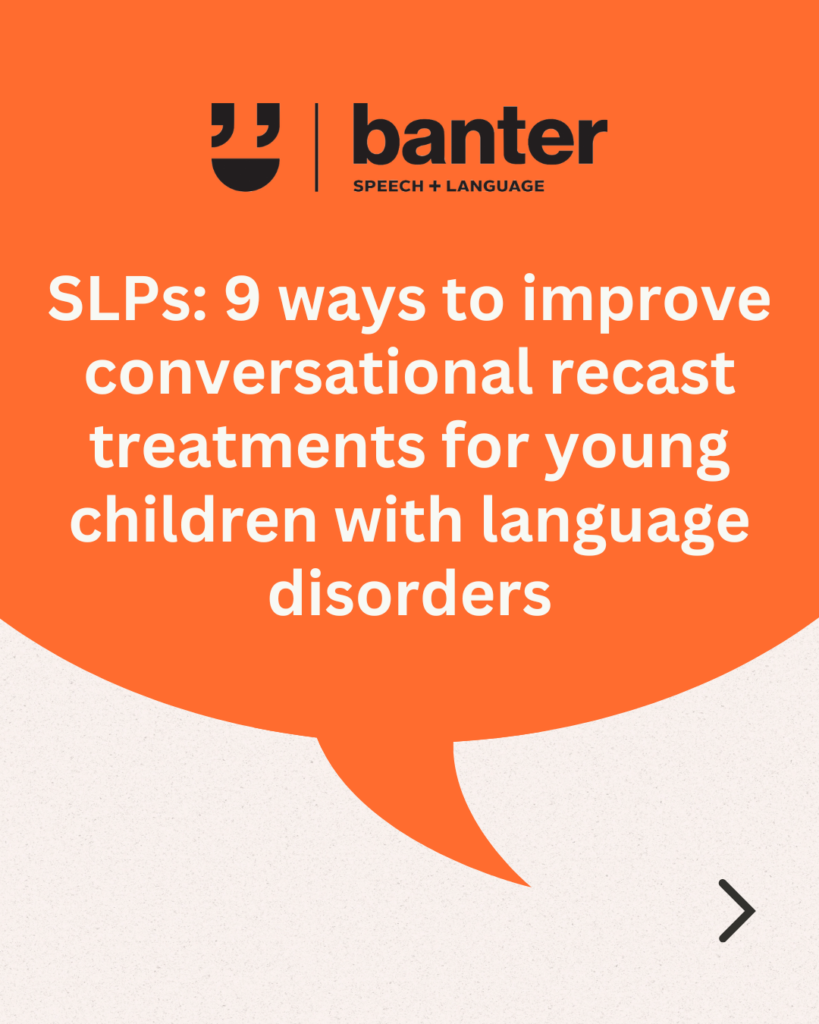
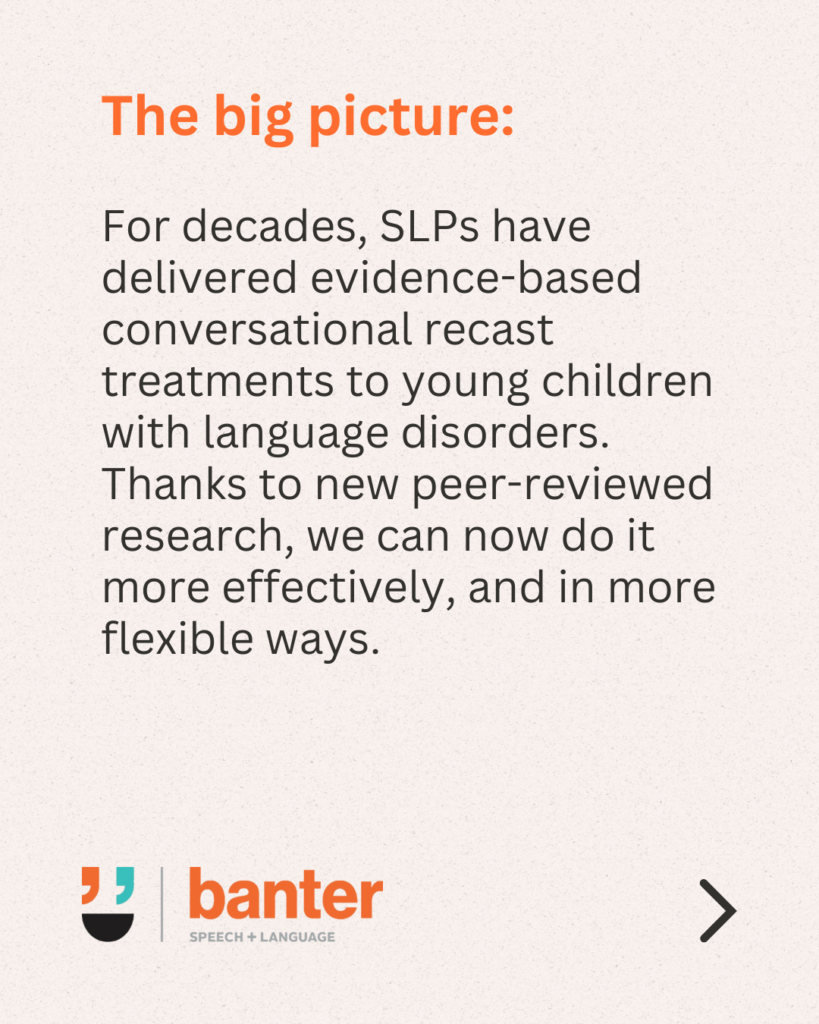
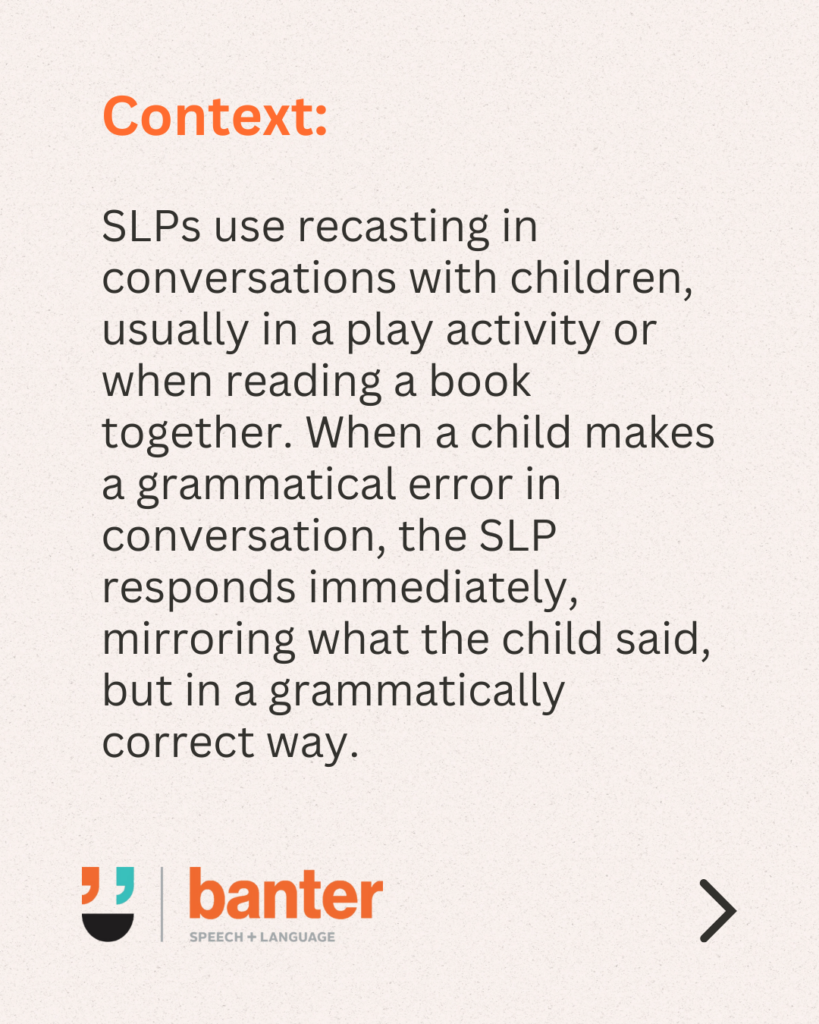
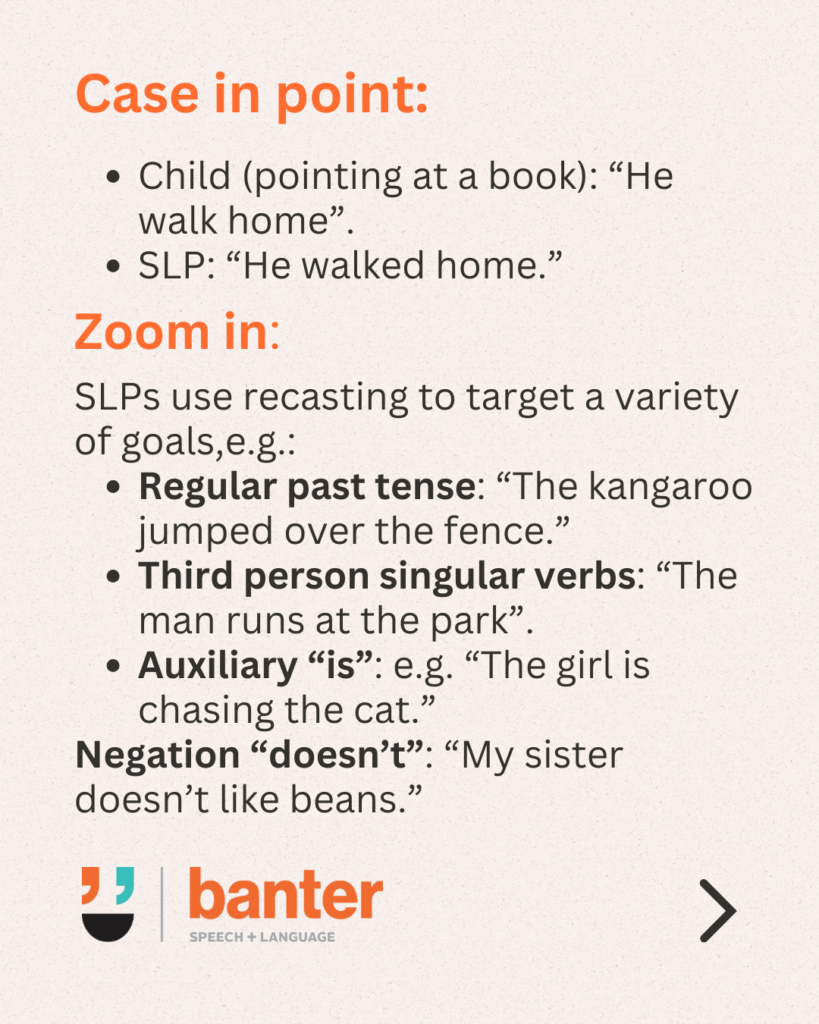
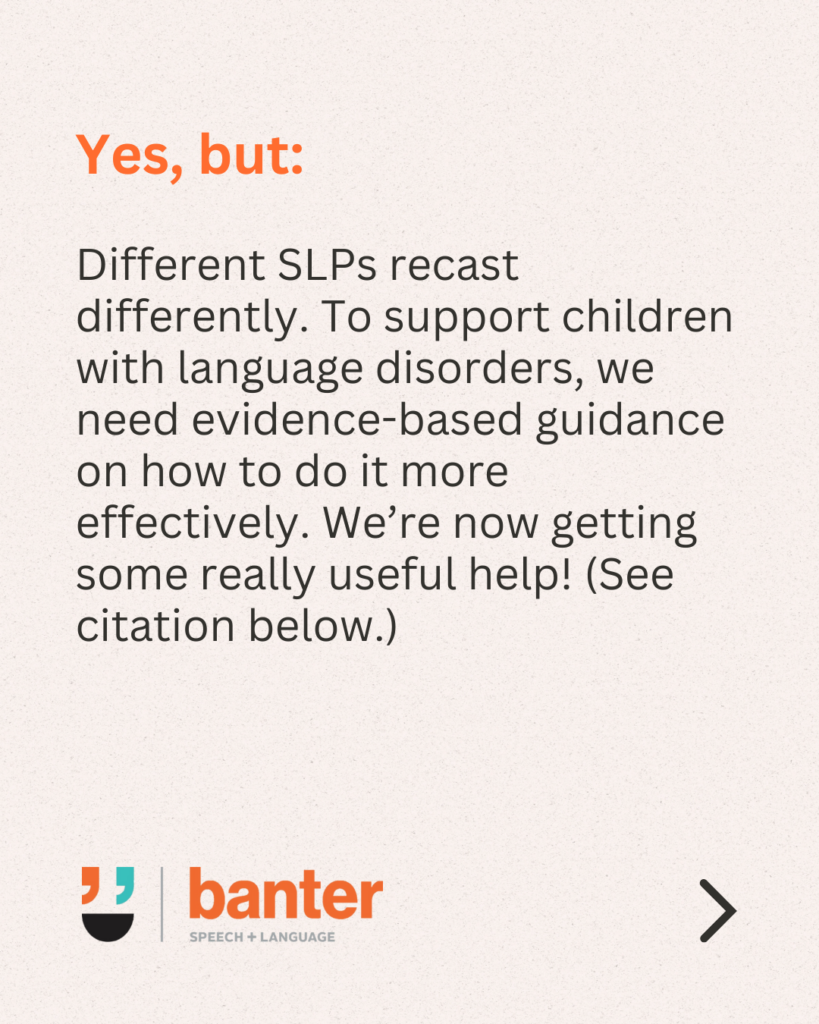
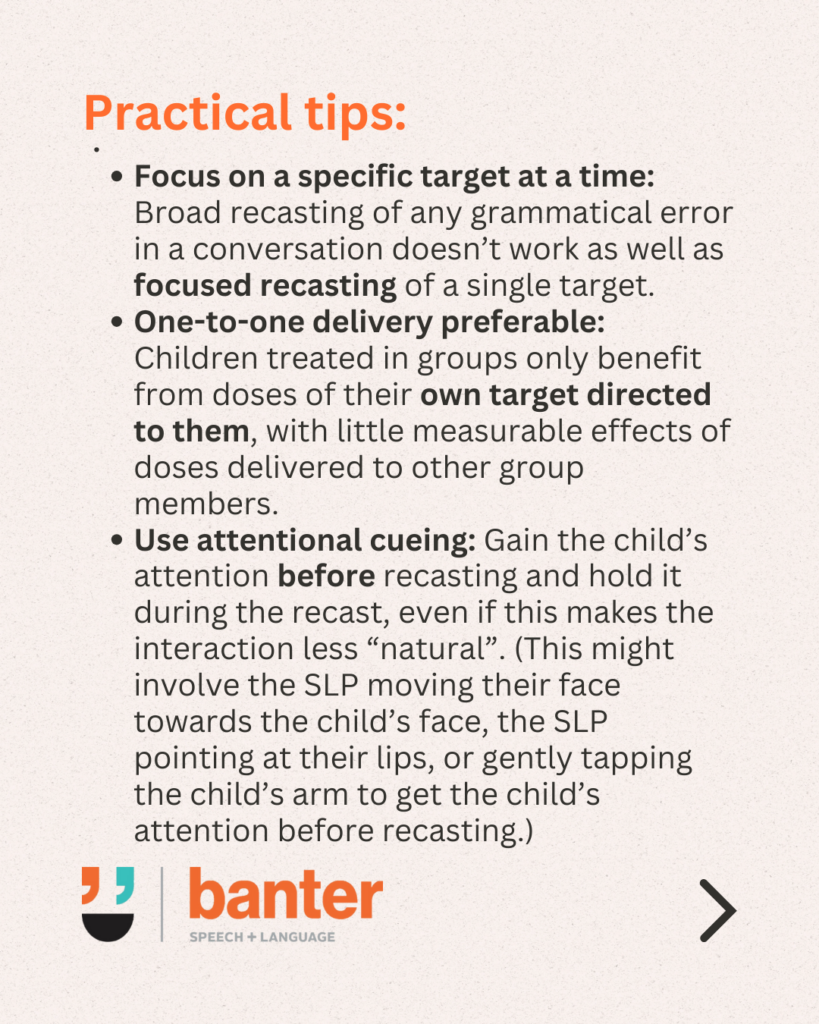
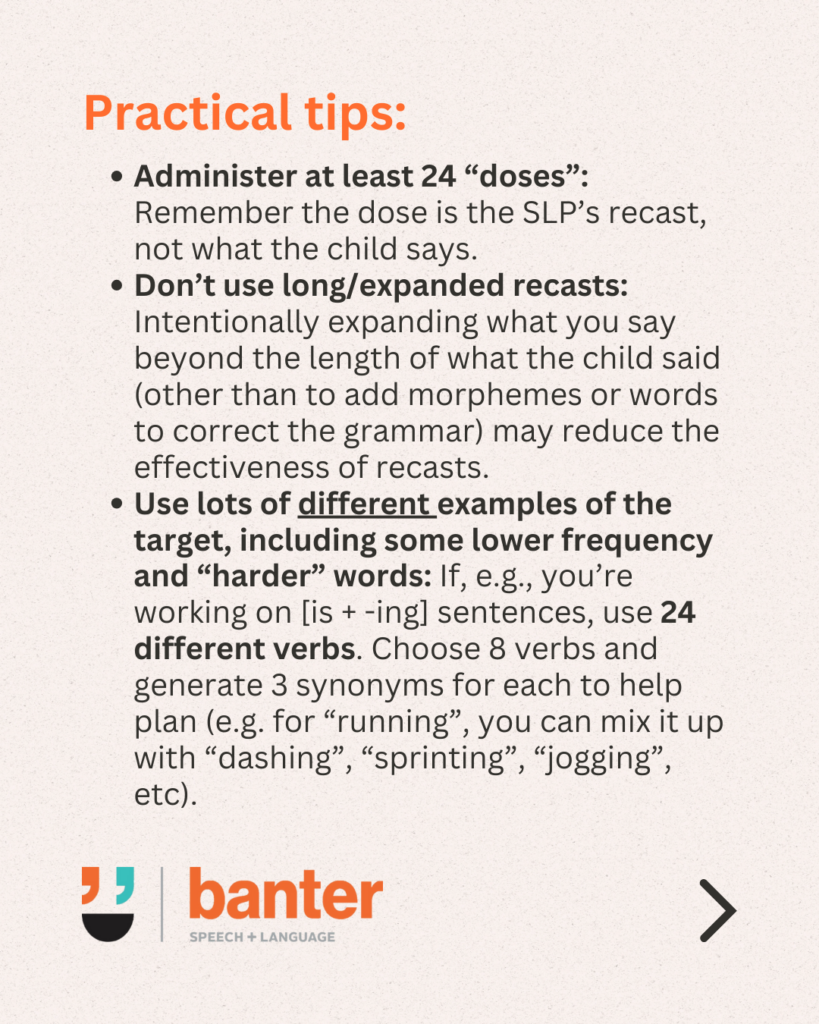
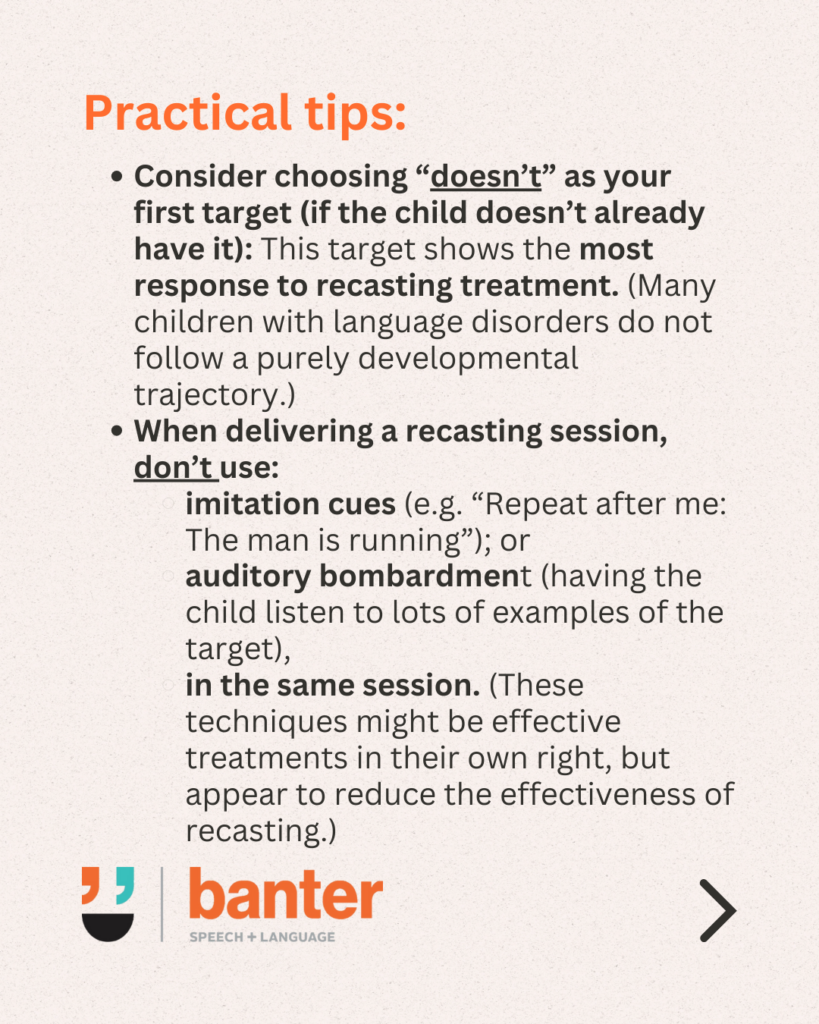
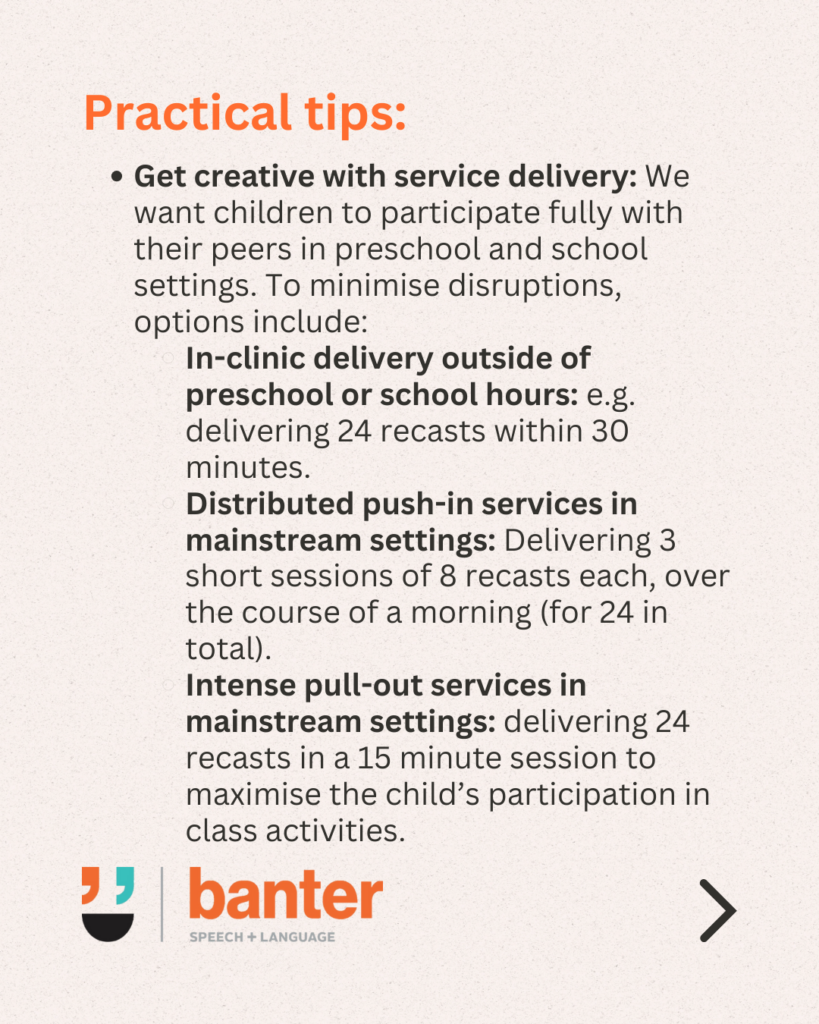
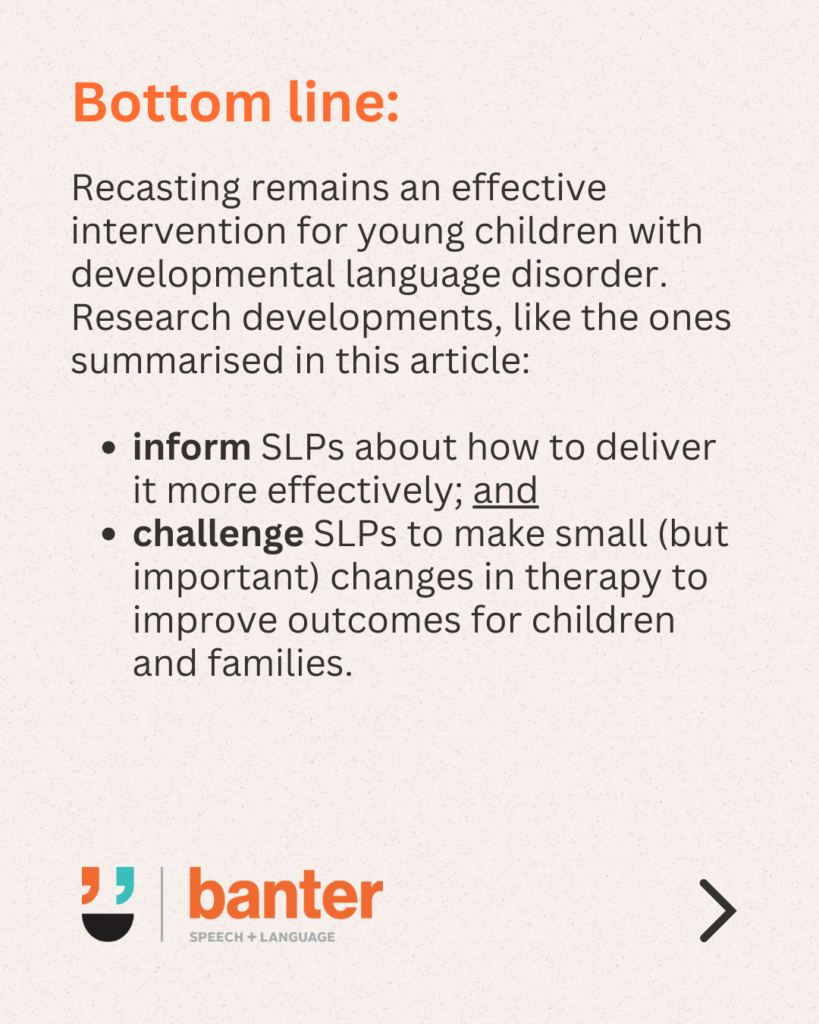

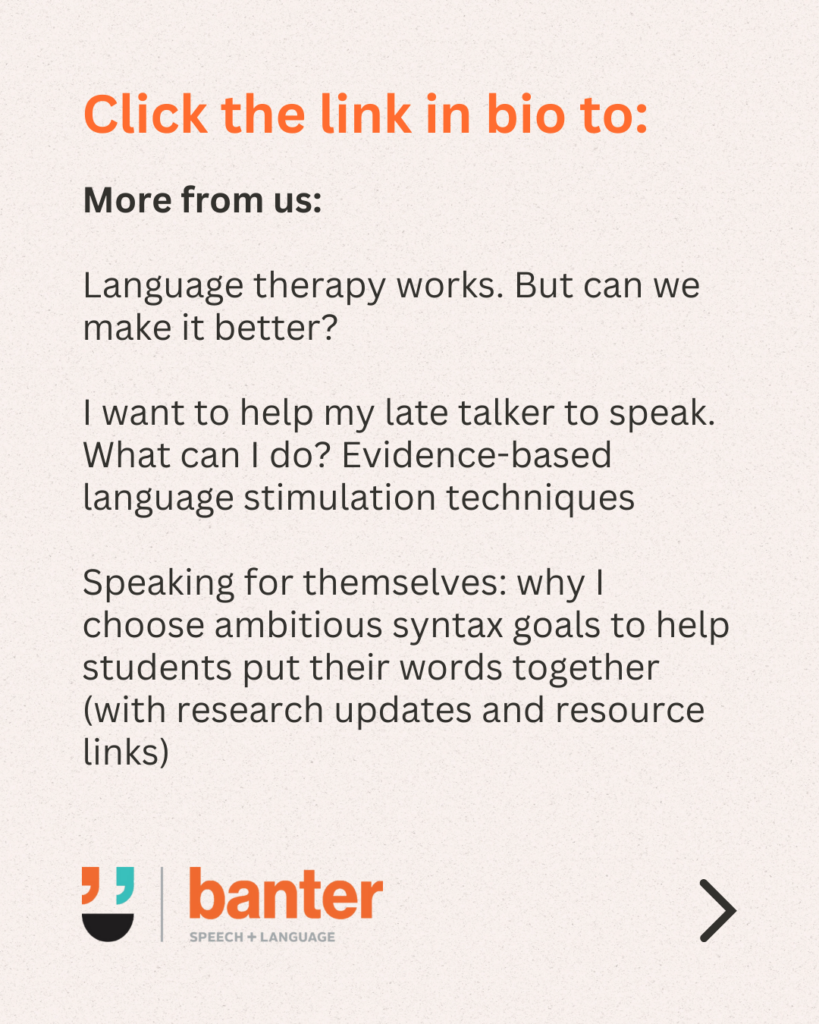
This article also appears in a recent issue of Banter Booster, our weekly round up of the best speech pathology ideas and practice tips for busy speech pathologists, speech pathology students and others.
Sign up to receive Banter Booster in your inbox each week:

Hi there, I’m David Kinnane.
Principal Speech Pathologist, Banter Speech & Language
Our talented team of certified practising speech pathologists provide unhurried, personalised and evidence-based speech pathology care to children and adults in the Inner West of Sydney and beyond, both in our clinic and via telehealth.








